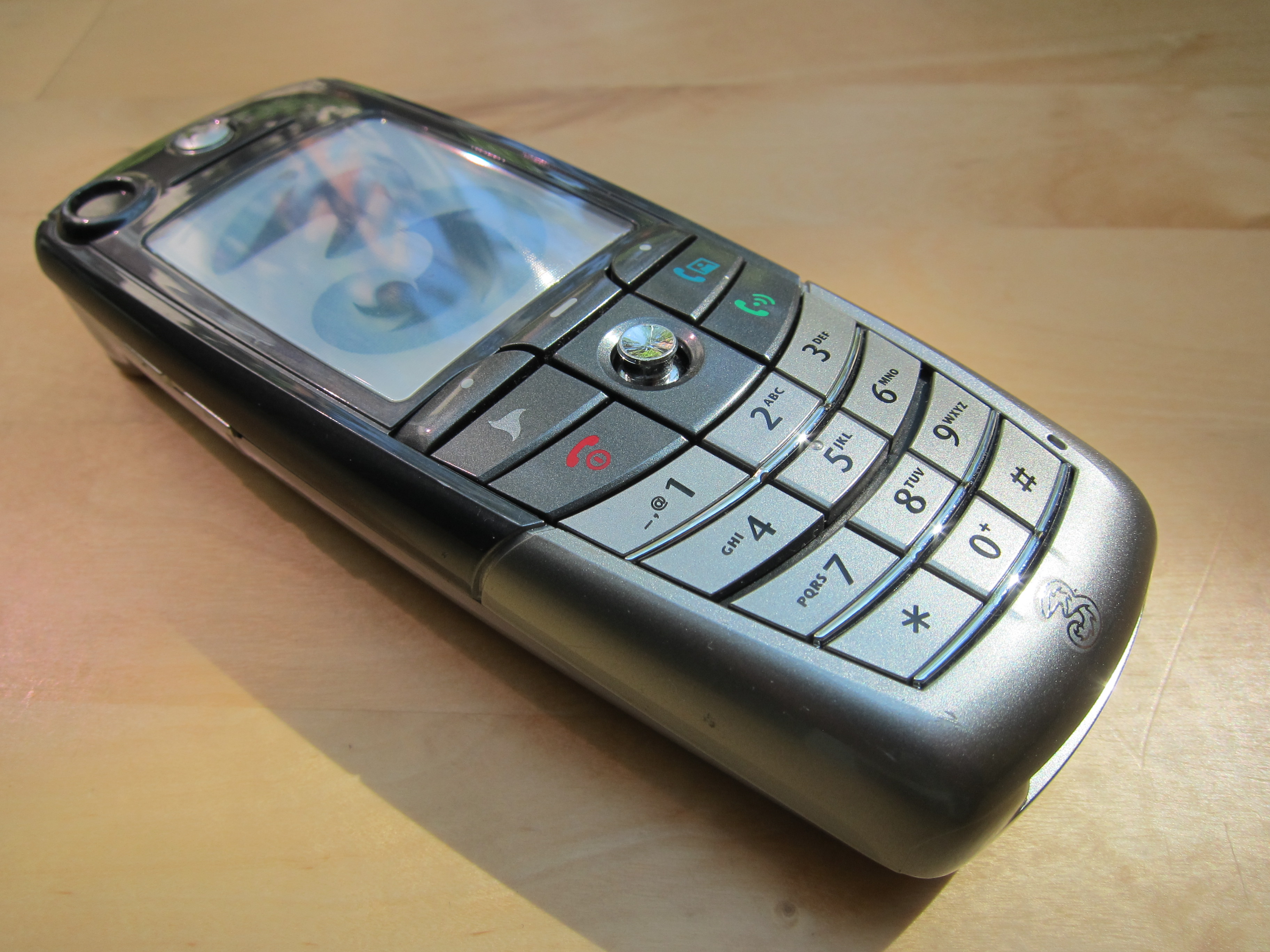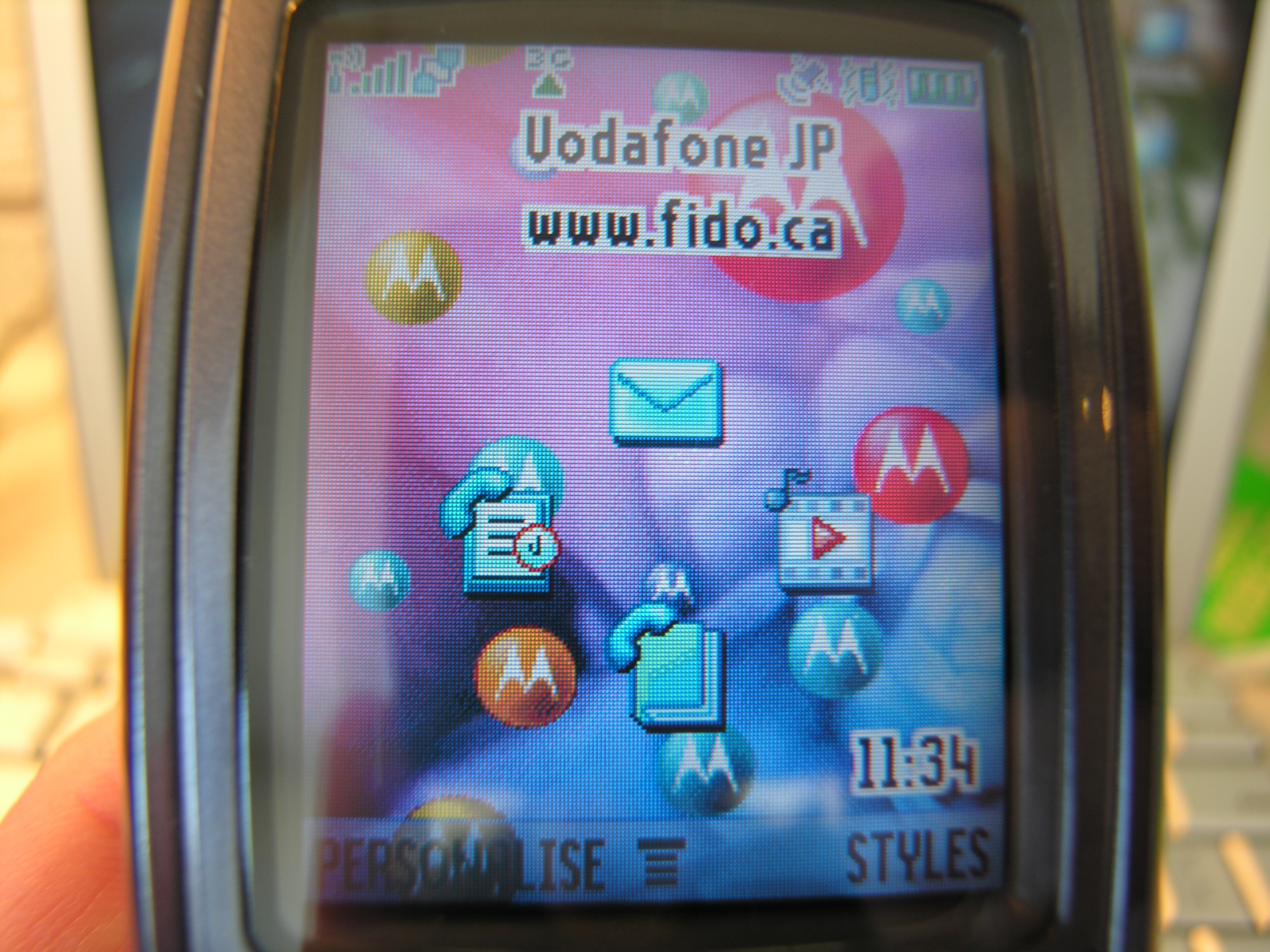There was just one problem: The damned things didn’t work.
Okay, that’s not entirely fair — I was able to send and receive text messages, at least. But repeated attempts to get the web browser to connect to something, anything, failed. Nor could I make either of our A835s do that other thing mobile phones are supposed to do. What was that again… oh right, make phone calls.
The handsets were butt-ugly, especially for Japan. Perhaps it was a good thing that the data didn’t work; I’d sure hate for the wrong person to see me use it, and be chased out of Akihabara by a jeering mob of keitai otaku (mobile phone geeks). I did manage to snap some blurry, pixelated VGA-quality photos here and there — certainly nothing worth printing out and getting framed.
What I remember most about this phone was using it to text my girlfriend in a frantic attempt to find her among the many and confusing aisles of Shibuya’s Tokyu Hands “Creative Life” store. When I finally found her she told me that all the while her phone had been in her purse and turned off, and why was I asking anyway?
]]>
Here’s Motorola’s A835, my first-ever experience with a 3G phone. And boy, did it ever suck. My then-girlfriend and I rented a pair of them from a Vodafone kiosk at Tokyo’s Narita airport in January, 2006. The one in the photo is a 3-branded dummy, in case you wondering.
Despite being unlocked and able to accept my Fido SIM card, I couldn’t get this thing to use data or even make phone calls. Best I could do was send SMS. In the midst of the world’s most advanced mobile phones this was fairly humiliating.
The browser didn’t end up making a connection. It never did.
The A835 was good for one thing: it gave me an opportunity to hear that craptacular “Hello Moto” ringtone for the first time. Hardly enough to justify two phone rentals and international text surcharges, though.
]]>Why is any of this important? Only because I spent four intensive months in the company of other geeks, and for the first time didn’t have to keep my mobile phone lust in check. Add to this Fido‘s blanket 14-day no-questions-asked return policy on handsets. The result? I could justify burning through any number of Fido-branded phones in the name of “scholarly research”. And that’s exactly what I did.
First up was Motorola’s V2282. Two things drew me to it: (1) changeable plastic skins for customization not unlike my Nokia 5190, and (2) a built-in FM radio. Unfortunately, no amount of colourful plastic could hide the fact that this was one butt-ugly Moto. Truth be told, the cheap skins actually made the phone look more tawdry than without. And the FM radio, groundbreaking as it was for the time, didn’t end up being such a killer feature after all. Making a wired headset do double duty as an antenna was clever enough, but the bulk of the commuting I did in those days was underground on the Toronto Subway system — where there was no reception of any kind to be had. There still isn’t. We’re kind of backwards that way.
I don’t think this Moto lasted a week before I sent it back. Apparently it had a web browser, but I never used it. The mobile Internet would have to wait for my next handset.
]]>Here’s the same Fido-branded Moto V2282 that I used for about a week in early 2001, before abusing Fido’s generous 14-day return policy and handing it back. You can read Steve Punter’s review here, and check the specs on the similar European 2288 here.
I was interested in this particular model for the plastic “skins” and the onboard FM radio. The skins were great in theory but pretty ghetto in day-to-day use. As for the radio, most of my commuting at the time was on the subway, where — big surprise — there was no FM signal.
Next…
]]>The StarTAC was also my first flip phone. According to Wikipedia it was technically the world’s first “full” flip — the MicroTAC that preceded it only qualified as a semi because of its exposed earpiece. The point is, back then this was a design revelation. You didn’t need a case for the StarTAC because the phone protected itself when closed — that is, the screen and keypad folded up against each other, safe from harm’s way. An additional benefit of this design was that you could answer a call by flipping the handset open, though prying it apart like a clamshell would make the hinge last much longer. Note that this was in the days before cell phones had call display, so you couldn’t screen calls even if you wanted to. And thanks to the whip antenna you could pull another slick move. Remember in the movie Pulp Fiction when John Travolta, with a comatose Uma Thurman in the back seat of his car, yanked out the antenna of his cell phone with his teeth before dialling a number? Yeah, that move. Badass.
My hardware upgrade could have gone a different way — Bell also carried the Nokia 282 at the time. But the StarTAC had yet another trick up its sleeve: it was my first handset with a vibrate function. No big deal today, but back then you were seen as a person of means if your phone politely buzzed rather than beeped.
Speaking of snob appeal, the StarTAC was the first cell phone with available accessories that were actually worth paying for. At the high end was the prohibitively expensive lithium-ion battery; for those on a budget there was a more modestly priced clamp-on battery extender, making the diminutive Moto look a lot more like the bulky MicroTAC that preceded it. I stuck with the standard battery but got myself a car charger. Too bad I didn’t have a car to plug it in to.
As time passed ever more models of StarTAC and StarTAC accessories came to market. I can remember two or three other people I knew who also had one; we’d chat about battery life, accessories and such. In other words, this marked the first time that I experienced a sense of community around a mobile device. Prescient stuff, this…
]]>I found two sources for the above image — one on this Indonesian blog and a (supposedly) Creative Commons version on this site.
According to Wikipedia Moto’s first model of the StarTAC line went by the moniker “StarTAC”; mine was most definitely the AMPS version.
]]>